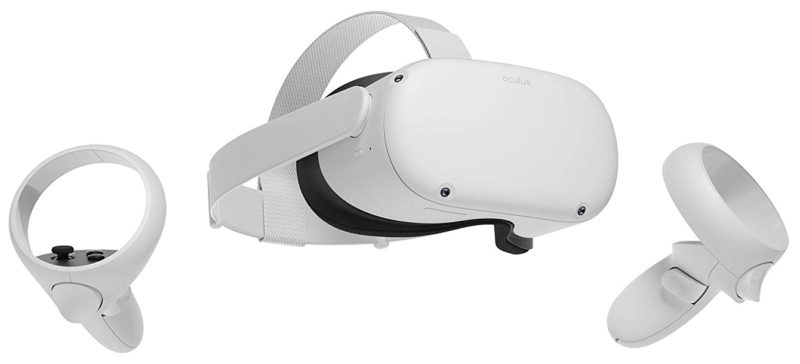From where I sit, Meta Quest marketing continues to falter. They increased the Quest 2’s price point from $300 to $400 at the same time existing customers largely tune out or abandon Horizon Worlds – their VR centerpiece, promoted via a Super Bowl ad that ran a reported $13 million. To further poison their own well, Meta has just pre-announced the Quest 3 for Holiday 2023 … during Holiday 2022 sales. And their chief advisor/evangelist was put on (virtual) stage to seemingly declare he has no idea what Meta’s Pro goggle strategy is all about, along with various other VR grievances.
Now I’ve been dabbling in video headsets for over two decades, dating back to a grad school compatriot’s augmented reality research and development. But I’m uber-geeky and don’t represent the “civilian” population. Taking folks from a flat, or even curved display, to an immersive virtual reality is quite the leap. They require some scaffolding (another grad school reference) to bridge that gap. What better way to do that by 1) pitching existing, familiar media from next generation hardware 2) made available at an palatable price point — reducing perceived risk investing in new technology, all-around lowering the barriers to entry.

Even for me, this was driven home a couple weeks back when the family was away and I wanted to watch The Batman. Because the man cave is not a physical location, it’s a state of mind… and I seek maximum immersion while taking in various genres my wife and daughter have no interest in. So a research project ensued. It turns out the movie is available on HBO Max… but HBO Max prevents Quest browser playback (unlike Disney+). The YouTube VR app has a superior interface for viewing, but I’m not at all familiar with how to rent (outside of Quest) and it seemed kludgey so I moved on to Amazon’s sluggish VR app and a rental executed outside of Quest.
Basically, Quest needs an iTunes store, a centralized repository to rent or buy then consume all sorts of media in an obvious, unified experience. Sure, some content could be 3D and VR (like some of the stuff haphazardly scattered throughout the existing TV Hub app). But there’s a lot of existing and compelling “traditional” video (think concerts!) to be had, presented on a seemingly huge screen. And if rolling your own is too hard, Meta could partner with someone as Roku initially did to put movie and television rentals front and center.
Woot! Got @getchannels sideloaded onto Quest 2 - even works with hardware decoding. pic.twitter.com/mBFjJaWGbU
— Dave Zatz (@davezatz) October 14, 2020
On the pricing front, $400 is a lot to ask of folks of new technology and a company relatively new to hardware. Apple, they aren’t. The original Oculus Go, which started at $200, was a Xiaomi collaboration and it’s a bummer both companies moved on as it provided folks a taste of what an immersive headset could provide. And, for some, a lower-end offering could be perfectly suitable and/or all that’s within budget! While, for others, a unit like that could ultimately inspire folks to move up the product ladder to a more capable unit at greater expense.

Over the years I’ve owned Oculus products, I’ve lost more video apps than I’ve gained. Maybe reinforcing this functionality should be built into the platform. By the by, every now and then Skybox VR is able to stream HDHomeRun channels over DLNA. Current Skybox app plus current HDHR firmware is a no go, but it’s cool when it works.
By the by, that screengrab is from the Macy’s Day parade. Oculus demo-ed outdoors, bundled up for winter, with no controllers is exceedingly realistic. ;)
Welp, Carmack is out. Given his public comments, it’s really no surprise other than he presumably left on his terms and timing.
https://twitter.com/ID_AA_Carmack/status/1603931899810004994